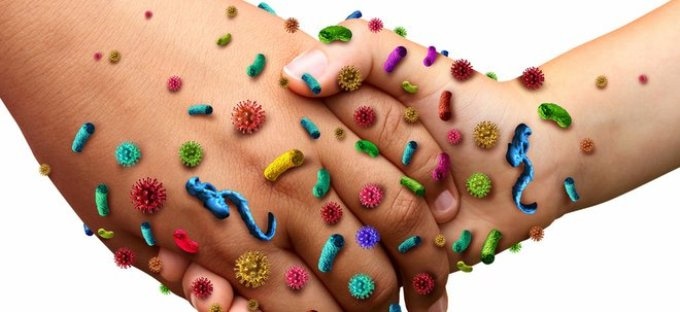Dec 15 2016
Dave Hampton, Camstent, outlines a solution for reducing infections using bacteria-phobic coatings
 Dave Hampton, Camstent, outlines a solution for reducing infections using bacteria-phobic coatings (credit: http://www.medicalplasticsnews.com/)
Dave Hampton, Camstent, outlines a solution for reducing infections using bacteria-phobic coatings (credit: http://www.medicalplasticsnews.com/)
Hospital Acquired Infections (HAIs) affect millions of people around the world and cost healthcare systems billions. Currently one in 20 in-patients (300,000 people in the UK), suffer from a HAI, increasing the length of their hospital stay by up to 350%. More people die from HAIs than breast cancer, car crashes or diabetes. Government research found that even a 10% reduction in infections could save the NHS £93.1m per annum.
Catheter Acquired Urinary Tract Infections (CAUTIs) are the single largest cause of hospital acquired infections today, according to both the CDC in the US and the NHS in the UK. CAUTIs develop in many patients within days of catheter insertion and, if the duration of catheterisation is prolonged, then the chances of developing an infection increase by 3% per day.
This is because it is common for bacteria biofilms to form on the catheter surface, leading to damage, inflammation and infection via the adjacent tissues. Biofilms are thin layers of microorganisms, usually protozoa and bacteria, which colonise exposed surfaces of medical devices.
Antibacterial coatings, whether silver or antibiotic impregnated, are intended to kill the biofilms once they have formed, minimising damage to exposed tissue. In practice, however, this approach is ineffective at preventing the growth of bacterial biofilms - existing coated catheters on the market have not reduced CAUTIs.
Using polymers to reduce infections
Research published in Nature Biotechnology in 2012 pointed to a different, more promising approach. Rather than aiming to kill bacteria, researchers looked to better protect against HAIs by changing the physical properties of surfaces to make them inhospitable to bacteria.
Camstent is pursuing this bacteria-phobic approach for reducing HAIs. Based on research from the Universities of Cambridge, Nottingham and Sheffield, Camstent’s polymer coating essentially creates a non-stick surface on the medical device that has been treated, inhibiting biofilm formation by pathogenic microorganisms in a laboratory environment. The aim is to prevent adhesion and colonisation of the surfaces of consumable medical devices rather than focusing on killing the organisms, and thus reduce infection rates by eliminating biofilm formation.
Neither a drug nor a biological solution, the product can be applied to silicone/ silastic surfaces, notably Foley catheters. Laboratory studies have shown that Camstent coated products perform longer and are more effective than market -eading alternatives with colonisation reduced ten-fold in independent comparative tests.
How Camstent works
Camstent’s approach uses proprietary polymers, guided by Nottingham’s research and formulated from two methacrylate components. One is optimised to prevent bacteria from maintaining contact with the device surface, while the other imparts the flexibility required for clinical safety. Laminated onto surfaces as thin films, this coating aims to inhibit surface colonisation of catheters by organisms commonly found in the urinary tract, implicated in HAIs. Variations in the component molecules may yield further formulations that should be able to resist blood products or protein attachment across a wide range of substrate materials used in medical devices.
The benefits
The bacteria-phobic coating approach could offer clinical advantages compared with other methods of reducing HAIs:
- Laboratory tests show a greater resistance to biofilm development, compared with alternatives, inhibiting the formation of bacterial colonies
- It is biologically inert, and so should avoid inflammation or other toxic side effects
- The coating is designed to be robust and to remain attached to the catheter under normal use conditions
- Its smooth, thin surface coating aims to minimise discomfort for the patient
- As it is simply a surface modification, it is non-pharmacologic, without the need for delivery systems, dosing, side effects, and drug testing
- Since it does not kill the bacteria, it does not stimulate the emergence of resistant organisms
- It is cost effective to create treated devices, as the Camstent coating is applied as a supplemental step at the end of the manufacturing process and before sterilisation
Where are we now?
Given that CAUTIs are the largest group of HAIs, the company’s development efforts are directed towards addressing this pressing need. Camstent has recently opened its own pilot manufacturing facility to produce treated catheters, and will work with researchers and clinicians to further research the validity of this approach.
The human and financial cost of HAIs continue to rise, but existing products have failed to meet the need, meaning that new approaches are required to overcome the challenge. Lab tests show that bacteria-phobic polymer coatings offer significant advantages over other methods when it comes to reducing HAIs, and there is further potential to apply the methods across a wide variety of medical devices.